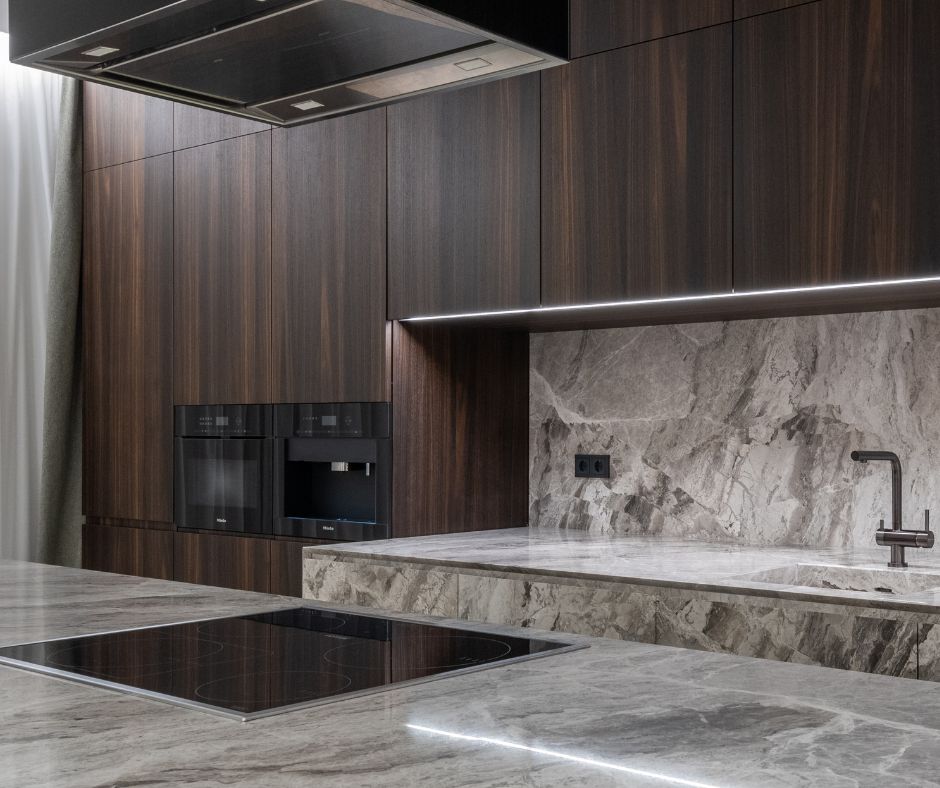Revolutionary kitchens are at the forefront of new culinary experiences. Although induction cooking technology might appear to be a contemporary innovation, its historical roots extend back to the early 20th century. Initial demonstrations in the 1930s enthralled audiences, showcasing the astonishing capability of boiling water using magnetic energy without any visible heat source. However, it has been in the past few decades, driven by remarkable advancements in technology, efficiency, and design, that induction cooktops have firmly established their place in modern kitchens.
Today, a growing number of home chefs and culinary enthusiasts are embracing induction cooking for its stunning blend of sleek aesthetics, exceptional precision, and unmatched energy efficiency. This cooking technique does much more than simply speed up meal preparation; it is transforming the art of home cooking by harmonizing the science of heat management with culinary creativity in every dish crafted on its stylish, polished surface. The right induction cooktop can rival the speed of a microwave in crafting delicious family meals!
Harness the Power of Precision Cooking for Enhanced Flavor and Nutrition
Unlike traditional gas or electric ranges, induction cooktops directly heat cookware using electromagnetic energy. This pioneering method eradicates wasted heat, prevents burnt edges, and offers superior control over both low and high temperatures. When you manage heat with such precision, your ingredients retain more of their natural moisture, flavor, and nutritional integrity. Whether you’re flash-searing proteins, gently simmering sauces, or quickly blanching vegetables, induction cooking makes it effortless to achieve perfect results, effectively avoiding overcooked meals and nutrient degradation.
Elevate Your Kitchen with Aesthetic and Functional Induction Cooktops
In kitchens where space is at a premium, induction cooktops excel in both performance and design. Their flat, smooth surfaces seamlessly integrate into your countertop, delivering a minimalist appearance that frees up additional space for food preparation, plating, or even enjoying casual meals.
Unlike traditional gas hobs, which are equipped with bulky grates and protruding burners, induction cooktops sit flush with the countertop. While ceramic stovetops may provide a similarly sleek look, they tend to remain dangerously hot long after the cooking process is complete.
In stark contrast, induction surfaces cool down rapidly once the cookware is removed. The heat is generated through the magnetic interaction between the cooktop and the cookware, rather than by the cooktop itself, which means the glass surface retains significantly less heat. This feature not only makes cleaning safer and easier but also creates a safer cooking environment. This is particularly beneficial for households with children or pets who may be curious about kitchen counters.
The result? A cooler kitchen with cleaner lines and increased flexibility—perfect for modern cooks who value both aesthetics and functionality.

Comprehensive Guide to Choosing the Ideal Cookware for Induction Cooking
Moving to induction cooking may come with a bittersweet realization—you may need to part ways with some beloved old pans. Since induction technology relies on magnetic energy for heat generation, it’s important to understand that not all pots and pans are suitable for this method.
For cookware to function effectively on an induction cooktop, it must be constructed from ferrous (magnetic) metals, such as cast iron, carbon steel, or magnetic-grade stainless steel. A simple magnet test can help determine compatibility: place a magnet on the bottom of the pan. If it adheres firmly, you’re good to go.
When selecting new cookware, choose pans with a sturdy, flat base. This design ensures optimal contact with the cooktop, facilitating even heat distribution, which is critical for achieving perfect browning, tender roasts, and crispy edges. Moreover, high-quality induction cookware is engineered to resist warping over time, maintaining consistent cooking performance for every meal.
Although it can be challenging to let go of old favorites, view it as an upgrade. In return, you gain enhanced control, faster cooking times, and dishes that showcase richer flavors and textures.
Induction Cookware Essentials: Quick Checklist for Successful Cooking
 Conduct a fridge magnet test—strong adhesion indicates induction compatibility
Conduct a fridge magnet test—strong adhesion indicates induction compatibility Prefer flat-bottom pans for optimal contact and heat distribution
Prefer flat-bottom pans for optimal contact and heat distribution Select cast iron, carbon steel, or magnetic stainless steel cookware
Select cast iron, carbon steel, or magnetic stainless steel cookware Avoid cookware composed solely of copper, aluminum, or glass unless explicitly marked for induction
Avoid cookware composed solely of copper, aluminum, or glass unless explicitly marked for induction Look for the induction symbol (resembling a horizontal coil or a series of loops) stamped on the base or package
Look for the induction symbol (resembling a horizontal coil or a series of loops) stamped on the base or package
Pro Tip: The induction symbol typically resembles a zigzag or spring coil graphic. Spotting it guarantees cookware compatibility.
Essential Installation Guidelines for Your Induction Cooktop
Before embarking on your culinary adventure with your new cooktop, it’s crucial to prioritize several installation essentials:
-
Professional Installation Is Crucial: Induction units often require dedicated electrical circuits and specific clearances. Make sure you engage professionals who are knowledgeable about these requirements.
-
Hire a Licensed Electrician: Wiring a high-powered induction cooktop is not a DIY project.
Learn why hiring a qualified electrician is essential. -
Check Your Power Setup: Some induction models require substantial power. Before making a purchase, ensure your wiring meets the cooktop’s specifications.
Proper installation not only guarantees optimal performance but also ensures safety and longevity.
Key Insights on the Benefits of Induction Cooking
Induction cooking provides more than just speed and safety—it is inherently intelligent. With the right cookware and a professionally installed system, you can achieve better-tasting meals, richer textures, and healthier options, meal after meal. In today’s kitchens, precision cooking is not merely desired; it has evolved into the new standard.
Frequently Asked Questions About Induction Cooktops
1. What Makes Induction Cooktops Superior to Gas or Electric Models?
Induction cooktops offer immediate heat control, improved energy efficiency, and enhanced safety features. Since they heat the cookware directly, meals cook faster while using less energy, and the surfaces remain cooler, thereby reducing the risk of burns.
2. Can I Continue Using My Current Pots and Pans on an Induction Cooktop?
Only if they are magnetic. Cookware made from cast iron or magnetic stainless steel is ideal. You can easily check compatibility by placing a magnet on the base—if it adheres firmly, it is suitable for induction cooking.
3. Does Induction Cooking Affect the Flavor of Food?
Yes, and in a beneficial way. Because induction cooking allows for precise temperature control, you can sear, sauté, or simmer without overheating, effectively preserving the natural flavors, textures, and nutrients far more effectively than with inconsistent gas or electric heat sources.
4. Is Special Wiring Necessary for an Induction Cooktop?
Most induction cooktops require a dedicated electrical circuit with specific voltage and amperage configurations. It is crucial to have a professional electrician evaluate and install your wiring to ensure compliance with safety regulations and guarantee optimal performance.
The post The Secret Ingredient in Modern Kitchens: Induction Cooktops Are Changing the Game appeared first on https://cookinggods.com
The Article Induction Cooktops: The Game-Changer in Modern Kitchens Was Found On https://limitsofstrategy.com

